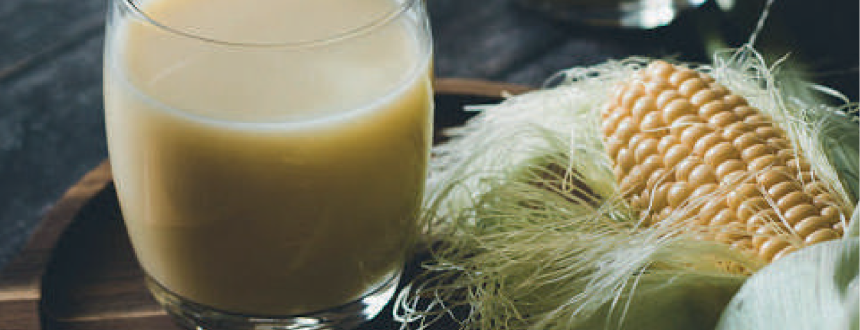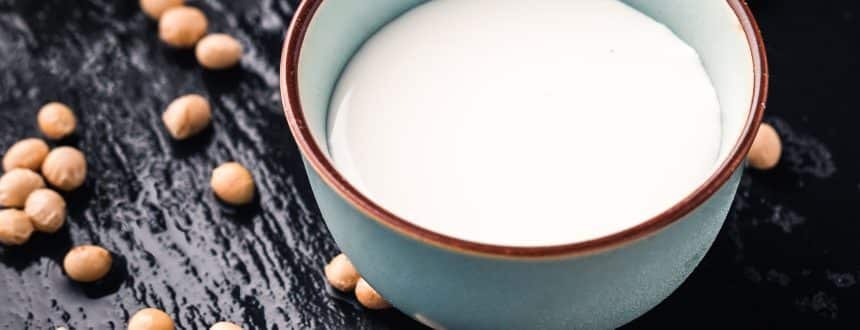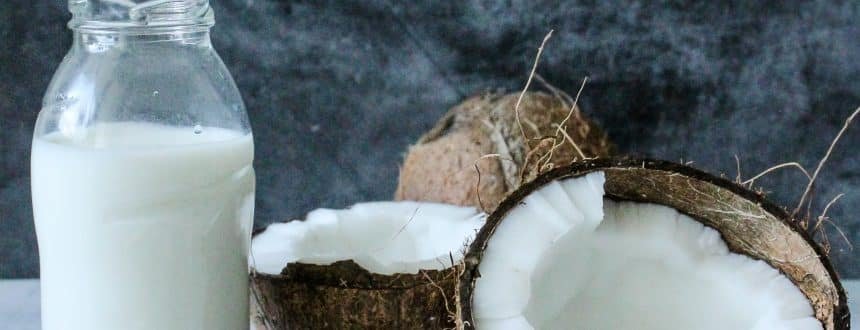Types of milk
Did you know that more than 6billion people worldwide consume milk and milk products? However, a large percentage of the total world population suffers from lactose intolerance. Lactose intolerance is the body’s
decreased ability to digest lactose, a sugar found in dairy milk. The condition is characterised by symptoms such as diarrhoea, gas and bloating that occur 30 minutes to two hours after consuming dairy products. It is different from milk allergy, which is an adverse immune reaction to the proteins in animal milk.
Although the condition is manageable, many avoid dairy products. There are interesting options to choose from, varying from lactose-free milk to plant-based milk. Simply put, it is milk with lactose removed from it. Lactose intolerance is brought about by the deficiency of lactase, an enzyme produced in the small intestine that breaks down the lactose in milk. Manufacturers produce lactose-free milk by adding lactase to regular milk. This does not affect the milk in any way, as it retains all the important macronurients found in regular milk such as calcium. The taste and smell of lactose-free milk also does not vary from that of regular milk.
How lactose-free milk is made
Lactose-free milk is made by adding a synthetic enzyme lactase to the milk. The enzyme predigests the sugar into glucose and galactose. The resulting milk still contains the enzyme, so it is ultrapasteurised to deactivate it and extend the shelf life.
Another way of making this kind of milk is by completely strain- ing the lactose out of the milk. This is through ultrafiltration techniques that mechanically separate lactose from milk, completely removing the sugar. Milk can also be passed over lactase, retaining the sugars glucose and galactose, but not the enzyme.
Lactose-free milk is usually sweeter than regular milk as the sugars in it have already been broken down. It also has a longer shelf life compared to regular milk as it lacks lactose, which is responsible for most of milk’s spoilage. Even as lactose-free milk is a good alternative for people with lactose intolerance, it’s un- suitable for those with dairy allergy. Other alternatives include:
Cereal-based milk
a. Oat milk
It is derived from whole oat grains and is made from soaking and blending them with water and straining them to separate the milk from the oats.
It’s a good source of fibre though it is not as nutritious as whole oats. It is, therefore, usually enriched with nutrients. Most commercial oat milk is fortified with vitamins A2, D, B2 and B12 and minerals like calcium, potassium, sodium, magnesium and iron. Oat milk is low in cholesterol making it good for the heart and weight loss.
b. Rice milk
Rice milk is plant milk made from rice. There are two ways to make this type of milk at home with cooked and uncooked rice. Manufacturers make it using brown rice and brown rice syrup, sweeten it, fortify it and add flavours.
To make rice milk after cooking rice, drain it, and let it cool. Add fresh water and a sweetener of your choice then blend. Pass the resulting liquid through a sieve and refrigerate.
To make rice milk from uncooked rice, soak it in hot water for several hours and drain it. Blend it using fresh water and add a sweetener of your choice. Sieve and refrigerate.
Rice milk is a good alternative for people with lactose intolerance and milk allergy. It has less calories compared to whole cow milk and is a good source of carbohydrates. However, it may not be the best due to its low nutritional content. Homemade rice milk is also tasteless and requires additional sweeteners. Manufactured rice milk, though expensive, is fortified with various nutrients such as calcium, magnesium and iron, and comes sweetened.
c. Corn milk
It is made from boiling and grinding corn kernels, corn liquid extract and water. It can be served either hot or cold. Corn milk contains vitamins B, B1, B5, and B3, which are good for the brain. The Vitamin C and folic acid in this milk are good for pregnant women.

How to make corn milk
Ingredients
- Maize
- Sugar
- Milk
- Water
Method
Peel and wash maize
• Boil maize in 1 litre of water
• After boiling , put maize into a side so that it turns dry and keep the boiling water.
• Remove maize seeds from the maize cobs
• Blend the maize seeds using the boiling water.
• Filter the liquid using a sieve or cloth so that you have the corn milk.
• Add milk and sugar and cook on medium fire until it boils.
• If you want it completely dairy free ,substitute the milk with rice milk.
Legume-based milk
-
Soy milk
Soy milk originated in East Asia and slowly became a common beverage around the world. With its rich, creamy texture, it’s good for people avoiding dairy for whatever reason. It is a dairy milk replacement made from soaking and grinding soya beans, boiling the mixture and filtering the resulting liquid. Most brands fortify their soy milk using minerals such as calcium. Soy milk is rich in proteins and balanced in fats and carbo- hydrates. It is the closest to low-fat cow milk in terms of nutritional composition compared to other plant-based milks. However, people with soy allergy should keep off soy milk. Another nutritional disadvantage of soy milk is the added sugar content. To minimise this, buy unsweetened soy milk.

2.Peanut milk
It is a non-dairy beverage made using peanuts and water. It is made in a similar way to rice milk and soy milk. Peanut milk needs to be cooked to bring out the creamy texture and nutty taste.How to make peanut milk
Ingredients
• 1/4 cup raw peanuts
• 400ml water
• 1 tablespoon sugar, or honey
Method
- Throw the raw peanuts in your blender grinder, and blend for 30 to 60 seconds, until the nuts are completely ground into a powder.
- Add water, the peanut powder and sugar in a pot. Cook and stir over medium heat for 10 minutes until it becomes milky.
- Strain out the milk with a fine colander/sieve and serve.
Peanut milk is a good source of vitamin E, magnesium and vitamin B6. It is also rich in vegetable proteins and low in cholesterol making it good for the heart. People with peanut allergy should avoid this milk. Peanut allergy is different from nut allergy as peanuts are considered legumes and not true nuts.
Nut-based milk
Nut-based milk is unadvisable for people with nut allergy. This is a hypersensitivity to tree nuts and edible nuts that cause an over- reaction of the immune system. Some of the symptoms include puffy or runny eyes, trouble breathing, swelling lips, difficulty swallowing, and stomach pain. Some people with tree nut allergy can safely tolerate coconuts and coconut products.
a. Almond milk
Almond milk is a plant-based milk made from blending almonds and water and straining to remove the pulp. In manufactured almond milk, thickeners, preservatives and flavourings are added to improve its flavour.
It is low in calories making it a healthy choice. It is also a good source of vitamin E, a disease-fighting antioxidant that also promotes healthy skin and eyes.
Processed almond milk is usually fortified with calcium and Vitamin D. If you’re trying to stay away from sugar, unsweetened almond milk is a great option.
b. Coconut milk

Coconut milk. It is the tasty alternative of cow milk extracted from the grated pulp of mature coconuts.
Coconut milk is sometimes confused for the liquid that can be drained from a coconut that’s been punctured.How to make coconut milk
Ingredients
• Coconut
• WaterMethod
• Grate coconut flesh into a bowl
• Add to a blender and add hot water
• Blend for a few seconds
• Strain the milk through a sieve and refrigerateCoconut milk is high in calories and saturated fat. It improves blood pressure. It is also a great source of magnesium, copper and iron. However, it is also high in saturated fats so it should be consumed in moderation.
Seed-based milk
a. Sesame milk
Sesame milk is obtained from sesame and sesame seeds. It is high in magnesium and vitamin E.
How to make sesame milk Ingredients
• 1 cup sesame seeds
• 4 cups water• 2 dates
• Vanilla extractMethod
• Soak sesame seeds in water overnight
• Drain them and put them in a blender and add water.• Blend for 60 seconds
• Strain the milk
• Rinse the blender and pour the milk back in, adding the rest of the ingredients.
• Blend until you get a smooth consistency and refrigerate.Surprisingly, sesame milk has more calcium than cow’s milk. It is also rich in un- saturated fatty acids, vitamins and minerals. Other benefits of sesame milk include:
- It helps reduce high blood cholesterol levels.
- Prevents nervous and cerebral exhaustion.
- Avoid arteriosclerosis.
- Useful in deficiency states :bone weakness, osteoporosis and hair loss.
- Suitable in the treatment of nervous problems, such as anxiety, stress, irritability or depression.
b. Hemp milk
It is plant milk made from hemp seeds that are soaked and ground in water. Although hemp food products come from the Cannabis sativa plant (where marijuana comes from), you will not get high from ingesting them. This is because you are not consuming the ”drug” part of the plant.
Therefore, it is impossible to get high on hemp milk. Hemp milk is rich in high-quality plant proteins. It can be homemade and be additionally sweet- ened and flavoured. It has a rich, nutty taste that’s almost similar to almond milk.
Manufacturers tend to add hemp oil to hemp milk to incorporate the omega-3 benefits found in hemp oil in the milk. If you’re watching your weight, you might want to stay away from sweetened hemp milk.
Additionally, hemp milk is a good source of proteins and is often fortified with calcium, phosphorus, and vita- mins A, B12 and D. It may promote skin health and protect against heart disease.



